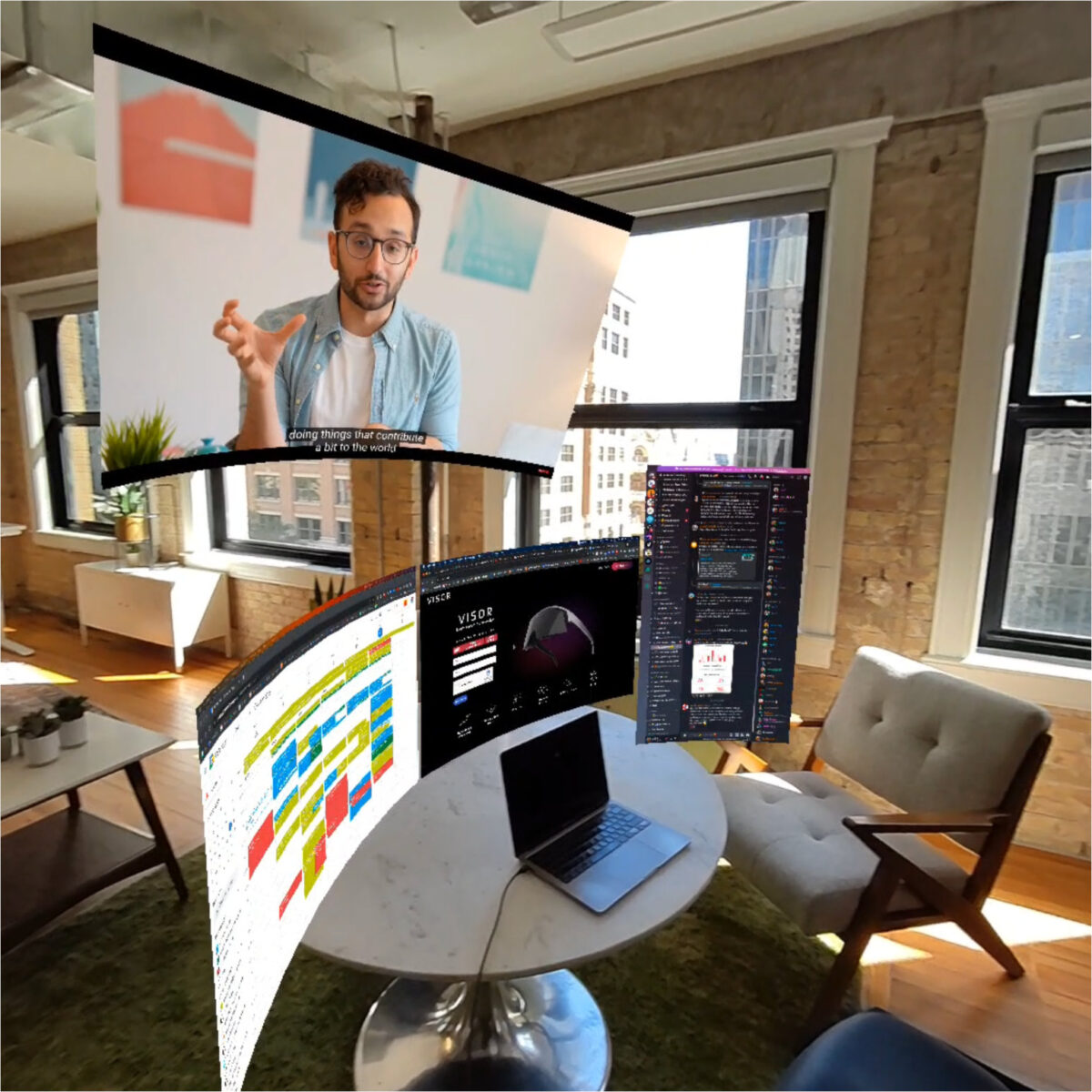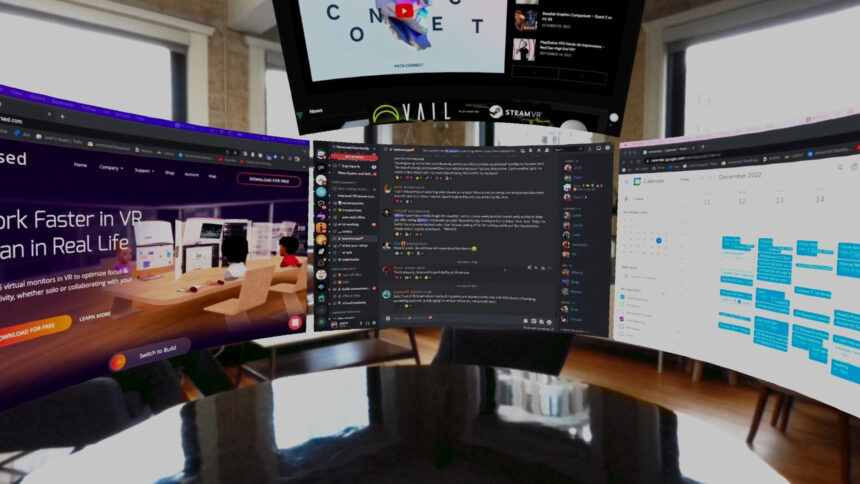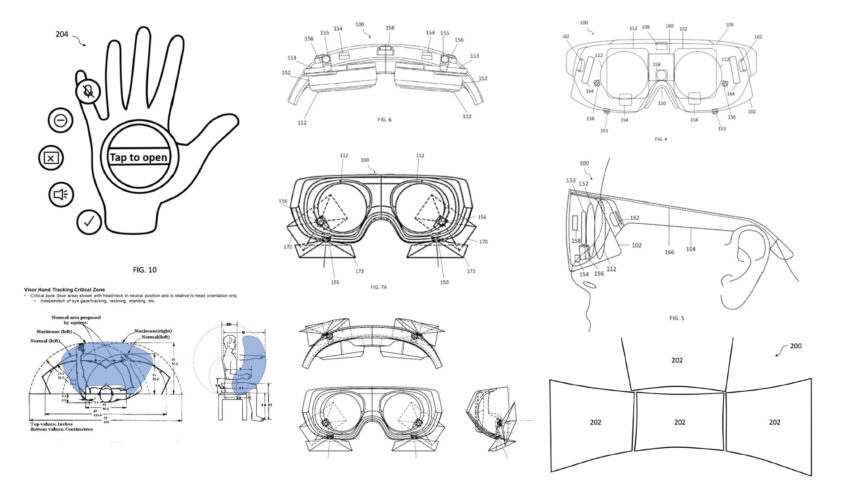Immersed Visor: Is the VR headset real or not?

January 4, 2024: Corrected the Qualcomm chip used in the Immersed Visor.
Immersed's Visor sounds almost too good to be true, so we dug deep to find out if it's a real product.
If you haven't heard of the Immersed Visor before, it's a VR headset scheduled to launch in 2024. In some ways, the Visor sounds too good to be true. While it has high-end specifications like 4K-per-eye resolution, eye-tracking, wireless PC VR, and a higher-performance version of the Qualcomm Snapdragon XR2 Gen 2 for standalone mode, the Visor's price is a surprisingly low at $950.
It's also coming from a company best known for the Immersed virtual desktop app. Several months ago, a software developer making its own VR headset would sound unlikely. However, we've seen Bigscreen VR, another app maker, design and launch the tiny but potent Beyond headset, proving that crossing disciplines from software to hardware can work well.
Still, questions linger — How do we know the Immersed Visor is real and how the price can be so low?
Content
Immersed is an established company
Immersed was founded in 2017 and, according to Reuters, the company was valued at $150 million in August 2023. Intel CEO Pat Gelsinger is a notable investor in this startup.

Immersed is a virtual desktop app for Meta Quest, HTC Vive, and Pico headsets. | Image: Immersed
The Immersed app is a well-known VR productivity app with nearly 2,000 reviews on the Meta store and an average rating of 4.3 out of 5 stars. It's actively maintained and has a robust support team and a large community of users. I, personally, use and enjoy the app. Mixed author Jan described Immersed as, “one of the best Quest apps.”
Immersed Visor is in progress
We know Immersed is a well-established software developer with a loyal user base. How do we know it's working on a VR headset?
Manufacturing hardware requires more resources than developing software. Immersed understands this and the company is going public (NASDAQ ticker: AIMR) to help secure the funding of this new venture. In addition, Immersed has announced partnerships with Qualcomm and Intel. An unnamed “tech giant” will assist with manufacturing.
Just finished more hardware partner meetings. I'm excited (& IMPATIENT) to get @WorkVisor into everyone's hands!! 😭🙏🏽
Special thanks to @intel 's CEO (@PGelsinger) & @Qualcomm for all the support! 🚀 pic.twitter.com/f3xjZMh6Hs— Renji Bijoy (@RenjiBijoy) September 28, 2023
Here are other milestones that show progress on the Immersed Visor:
The Visor was officially announced in early August, looking like futuristic glasses but boasting specifications beyond current consumer VR headsets.
Progress was demonstrated on components at the end of August. This is an eye-tracking system being tested.
.@WorkVisor is about to become the BEST work-focused headset, period! 🤯🤯🤯 pic.twitter.com/L5mqUkwrEx
— Renji Bijoy (@RenjiBijoy) August 29, 2023
The Immersed Visor was held in the hand of Intel CEO Pat Gelsinger in September during the Intel Innovation keynote.
Most recently, Immersed announced it has a patent pending on the Visor. I couldn't find the patent application under the name Immersed, but I did receive some images from a source who wishes to remain anonymous, and who assures me they are from the application.

A portion of the Immersed Visor patent application.
In my mind, it's clear that Immersed and its partners are actively developing the Visor VR headset.
The next question is how it can be so inexpensive.
Immersed Visor sells for $950
When Immersed announced the Visor, it was unexpected. However, one of the most surprising details is the $950 price for a 4K-per-eye headset with eye-tracking and a Qualcomm Snapdragon XR2+ Gen 2.
For comparison, Apple's $3,500 Vision Pro has 4K-per-eye, eye-tracking, a front-facing screen, more cameras, and a desktop-class M2 processor. Meta cut margins thin on its $500 Quest 3 headset, it is probably even subsidized. It has the same processor as the Visor, but lacks eye-tracking and the resolution is significantly lower at a bit more than 2K-per-eye.
Immersed claims it cut as many components as possible to bring the weight of the Visor close to that of a phone. This could save the cost of redundant components. On the other hand, smaller components are often pricier.

Immersed Visor rests on a desk next to a laptop computer. | Image: Immersed
Still, you might expect the Immersed Visor's price to be closer to the Apple Vision Pro than the Meta Quest 3. How can it cost just $950?
I asked Renji Bijoy to explain the budget pricing on this high-end VR headset.
His initial response suggested the components, beyond the 4K displays, aren't that expensive. I pointed out competing headsets have similar components and costs. Bijoy explained a more important fact: Immersed isn't marking up the price as much as others.
Part of the reasoning for a lower margin could be that Immersed's research and development costs are much lower than the pioneers in the field.
Meta has publicly invested billions of dollars in VR R&D. Apple hasn't disclosed the amount it spent preparing to launch the Vision Pro, but we know the project has been in development since 2008, based on a patent application MacRumors found.
If the profit margin on the Visor is lower, how will Immersed make money?
Immersed’s subscription model
The intent is to earn money from ongoing software subscriptions. Immersed has a free tier that matches or exceeds competing virtual desktop apps. For those that want more, a $5 monthly subscription unlocks two additional screens, higher resolutions, and eight more collaborators.
An enterprise tier adds device management, user access management dashboards, collaboration, presenter mode, virtual headquarters, and other features that individuals don't need. This is where the bulk of Immersed's revenue is made.
This is the business model of many tech companies, and occasionally, it pays off. Offer a free tier with extras available for a moderate subscription fee, and an enterprise tier with broad management tools and customizations, then build the user base exponentially.
As a productivity app, Immersed is popular among dedicated VR users, but for faster growth, it needs to break through the comfort and sharpness barriers that prevent wider adoption of the current generation of VR headsets.

A person wearing the Visor in a public setting. | Image: Immersed
That's the reason for the Visor and the affordable pricing. It's a formula for continued growth — if it succeeds.
If corporations order the Visor in the hundreds or thousands, a razor-thin margin doesn't matter because expanding the user base and increasing subscription revenue is the end goal.
Immersed Visor launch date
The Immersed Visor doesn't have a firm launch date, but the company expects the release in 2024.
The Immersed Visor has plenty of investors, notable tech partners, and possibly the perfect timing as a work-focused alternative to the Apple Vision Pro. The design looks good and components are being tested. The next step is to put the pieces together, do thorough testing, then move onto production.
That takes time, so a mid-to-late 2024 launch seems plausible. The rapid release of the Bigscreen Beyond headset shows how quickly it can be done. The recent advances made in VR hardware and software streamlines sourcing components and developing software.
Still, setbacks could push the Visor's launch into 2025. Preorders save a place in line and are fully refundable, reducing the risk of investing early.
Note: Links to online stores in articles can be so-called affiliate links. If you buy through this link, MIXED receives a commission from the provider. For you the price does not change.